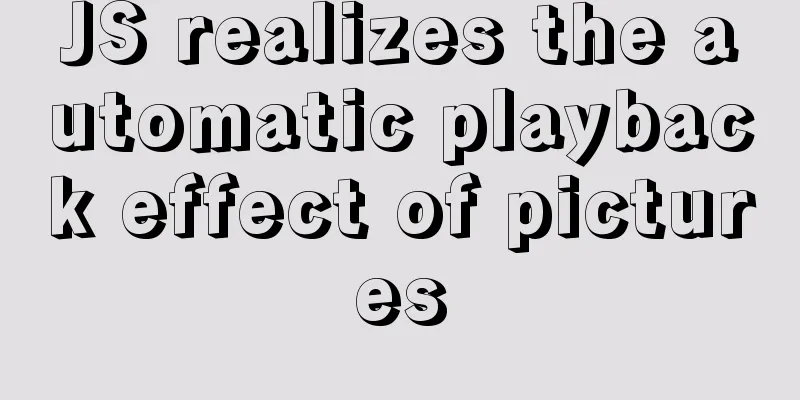CSS3 uses transform deformation combined with events to complete fan-shaped navigation

|
Because I wrote the word transition incorrectly in this case, I spent an entire afternoon on it. It really made me blind. I will never make such a stupid mistake again >_<
1. Knowledge point analysis 1. APDiv positioning layout 2. The effects of transition and transform under click events. 3. Calculation of the left and top values of each small icon. 4. After clicking the small icon, listen to the icon's transition event. 2. HTML source code
<div id="stage">
<div id="nav">
<img src="images/1.png">
<img src="images/2.png">
<img src="images/3.png">
<img src="images/4.png">
<img src="images/5.png">
</div>
<div id="home"> <img src="images/home.png"> </div>
</div>3. CSS style
body {
margin: 0;
}
body{
background-color:#eee;}
#stage {
width: 300px;
height: 300px;
position: relative;
top: 150px;
margin: 0 auto;
}
#nav {
position: absolute;
width: 120px;
height: 107px;
left: 50%;
margin-left: -60px;
top: 50%;
margin-top: -53px;
}
#nav img {
width: 100%;
position: absolute;
left: 0;
top: 0;
cursor: pointer;
}
#home {
position: absolute;
width: 150px;
height: 134px;
left: 0;
top: 0;
right: 0;
bottom: 0;
margin: auto;
cursor: pointer;
transition: 0.5s ease-in-out;
}
#home img {
width: 100%;
}4. JavaScript source code
window.onload = function(){
var oHome = document.getElementById("home");
var oNav = document.getElementById("nav");
var aImg=oNav.getElementsByTagName("img");
var imgLen=aImg.length;
var onOff=true;
var iR=-260;
//When the mouse clicks each small icon for(var i=0;i<imgLen;i++){
aImg[i].onclick=function(){
this.style.transition="0.2s";
this.style.transform="scale(1.2) rotate(720deg)";
this.style.opacity=0.1;
addEnd(this,end); //Add an event listener every time a small image is clicked. When the event ends, the end function is executed.
}
}
//When the event ends, execute the end function, restore the default value, and remove the event listener.
function end(){
this.style.transition="0.1s";
this.style.transform="scale(1) rotate(720deg)";
this.style.opacity=1;
removeEnd(this,end);
}
//When you click the home icon, the first time it rotates clockwise, and the second time it rotates counterclockwise.
oHome.onclick=function(){
if(onOff)
{
this.style.transform="rotate(360deg)";
//Set the left and top values of each image.
for(var i=0;i<imgLen;i++){
// has a starting angle of 30 degrees.
var oLt=getLeftTop(iR,120/(imgLen-1)*i+30);
aImg[i].style.left=oLt.l+"px";
aImg[i].style.top=oLt.t+"px";
// Each image has a delay of 100ms.
aImg[i].style.transition="0.5s ease-in-out "+100*i+"ms";
aImg[i].style.transform="scale(1) rotate(720deg)";
}
}
else
{
this.style.transform="rotate(0deg)";
for(var i=0;i<imgLen;i++){
aImg[i].style.left=0+"px";
aImg[i].style.top=0+"px";
//The pictures are retrieved in reverse order. Each image has a 100ms delay.
aImg[i].style.transition="0.5s ease-in-out "+100*(imgLen-i-1)+"ms";
aImg[i].style.transform="scale(1) rotate(0deg)";
}
}
onOff=!onOff;
}
}
//Get the left and top values of the img image. Pythagorean theorem, given the included angle and hypotenuse, get the length of the opposite side: sin(radians)*hypotenuse. Length of the side: cos(radians)*hypotenuse. Radians = degrees/180*pi.
function getLeftTop(iR,iDeg){
var ileft=Math.round(Math.sin(iDeg/180*Math.PI)*iR);
var iTop=Math.round(Math.cos(iDeg/180*Math.PI)*iR);
//When returning two values, use the object method.
return {
"l":ileft,
"t":iTop
}
}
//Add end and remove end functions. Listen for transition events.
function addEnd(obj,fn){
obj.addEventListener("transitionend",fn,false);
}
function removeEnd(obj,fn){
obj.removeEventListener("transitionend",fn,false);
}Complete page code
<!doctype html>
<html>
<head>
<meta charset="utf-8">
<title>Circular Navigation</title>
<style>
body {
margin: 0;
}
body{
background-color:#eee;}
#stage {
width: 300px;
height: 300px;
position: relative;
top: 150px;
margin: 0 auto;
}
#nav {
position: absolute;
width: 120px;
height: 107px;
left: 50%;
margin-left: -60px;
top: 50%;
margin-top: -53px;
}
#nav img {
width: 100%;
position: absolute;
left: 0;
top: 0;
cursor: pointer;
}
#home {
position: absolute;
width: 150px;
height: 134px;
left: 0;
top: 0;
right: 0;
bottom: 0;
margin: auto;
cursor: pointer;
transition: 0.5s ease-in-out;
}
#home img {
width: 100%;
}
</style>
<script>
window.onload = function(){
var oHome = document.getElementById("home");
var oNav = document.getElementById("nav");
var aImg=oNav.getElementsByTagName("img");
var imgLen=aImg.length;
var onOff=true;
var iR=-260;
//When the mouse clicks each small icon for(var i=0;i<imgLen;i++){
aImg[i].onclick=function(){
this.style.transition="0.2s";
this.style.transform="scale(1.2) rotate(720deg)";
this.style.opacity=0.1;
addEnd(this,end); //Add an event listener every time a small image is clicked. When the event ends, the end function is executed.
}
}
//When the event ends, execute the end function, restore the default value, and remove the event listener.
function end(){
this.style.transition="0.1s";
this.style.transform="scale(1) rotate(720deg)";
this.style.opacity=1;
removeEnd(this,end);
}
//When you click the home icon, the first time it rotates clockwise, and the second time it rotates counterclockwise.
oHome.onclick=function(){
if(onOff)
{
this.style.transform="rotate(360deg)";
//Set the left and top values of each image.
for(var i=0;i<imgLen;i++){
// has a starting angle of 30 degrees.
var oLt=getLeftTop(iR,120/(imgLen-1)*i+30);
aImg[i].style.left=oLt.l+"px";
aImg[i].style.top=oLt.t+"px";
// Each image has a delay of 100ms.
aImg[i].style.transition="0.5s ease-in-out "+100*i+"ms";
aImg[i].style.transform="scale(1) rotate(720deg)";
}
}
else
{
this.style.transform="rotate(0deg)";
for(var i=0;i<imgLen;i++){
aImg[i].style.left=0+"px";
aImg[i].style.top=0+"px";
//The pictures are retrieved in reverse order. Each image has a 100ms delay.
aImg[i].style.transition="0.5s ease-in-out "+100*(imgLen-i-1)+"ms";
aImg[i].style.transform="scale(1) rotate(0deg)";
}
}
onOff=!onOff;
}
}
//Get the left and top values of the img image. Pythagorean theorem, given the included angle and hypotenuse, get the length of the opposite side: sin(radians)*hypotenuse. Length of the side: cos(radians)*hypotenuse. Radians = degrees/180*pi.
function getLeftTop(iR,iDeg){
var ileft=Math.round(Math.sin(iDeg/180*Math.PI)*iR);
var iTop=Math.round(Math.cos(iDeg/180*Math.PI)*iR);
//When returning two values, use the object method.
return {
"l":ileft,
"t":iTop
}
}
//Add end and remove end functions. Listen for transition events.
function addEnd(obj,fn){
obj.addEventListener("transitionend",fn,false);
}
function removeEnd(obj,fn){
obj.removeEventListener("transitionend",fn,false);
}
</script>
</head>
<body>
<div id="stage">
<div id="nav"> <img src="images/1.png"> <img src="images/2.png"> <img src="images/3.png"> <img src="images/4.png"> <img src="images/5.png"> </div>
<div id="home"> <img src="images/home.png"> </div>
</div>
</body>
</html>The above is the details of how CSS3 uses transform deformation combined with events to complete fan-shaped navigation. For more information about CSS3 fan-shaped navigation, please pay attention to other related articles on 123WORDPRESS.COM! |
<<: Layui implements sample code for multi-condition query
>>: Detailed explanation of the basic use of Apache POI
Recommend
How to enable remote access permissions in MYSQL
1. Log in to MySQL database mysql -u root -p View...
Linux parted disk partition implementation steps analysis
Compared with fdisk, parted is less used and is m...
Detailed explanation of using Nginx reverse proxy to solve cross-domain problems
question In the previous article about cross-doma...
The whole process of Vue page first load optimization
Table of contents Preface 1. Image Optimization 2...
Example of how to configure multiple virtual hosts in nginx
It is very convenient to configure virtual host v...
Teach you how to use webpack to package and compile TypeScript code
TypeScript Bundling webpack integration Usually, ...
Detailed explanation of MySQL 8.0 dictionary table enhancement
The data dictionary in MySQL is one of the import...
The complete version of the common Linux tool vi/vim
Why learn vim Linux has a large number of configu...
Use of provide and inject in Vue3
1. Explanation of provide and inject Provide and ...
MySQL uses UNIQUE to implement non-duplicate data insertion
SQL UNIQUE constraint The UNIQUE constraint uniqu...
Docker configuration Alibaba Cloud image acceleration pull implementation
Today I used docker to pull the image, but the sp...
HTML table tag tutorial (11): horizontal alignment attribute ALIGN
In the horizontal direction, you can set the alig...
Some common mistakes with MySQL null
According to null-values, the value of null in My...
Webservice remote debugging and timeout operation principle analysis
WebService Remote Debugging In .NET, the remote d...
Basic knowledge of website design: newbies please read this
Now many people are joining the ranks of website ...










